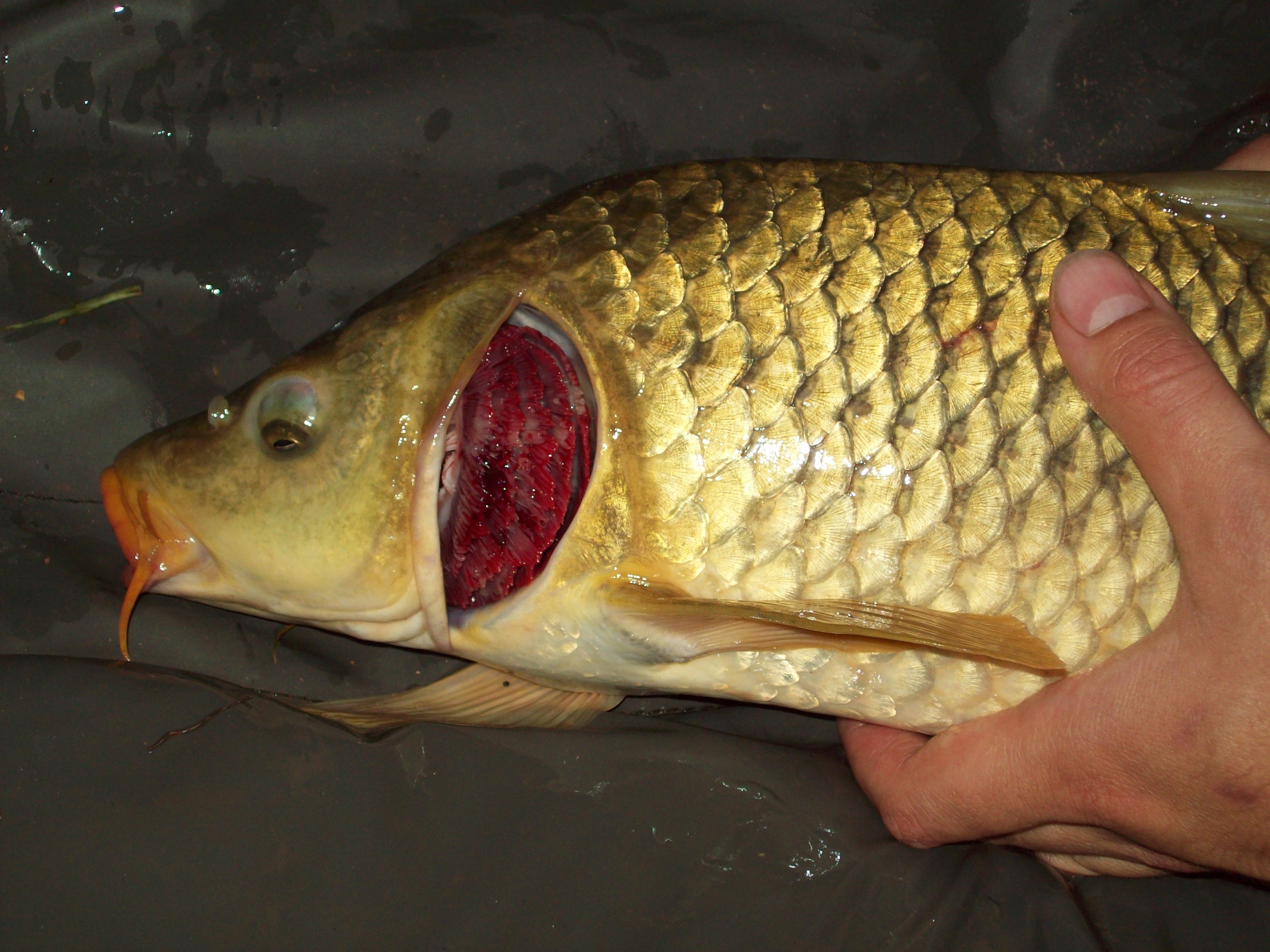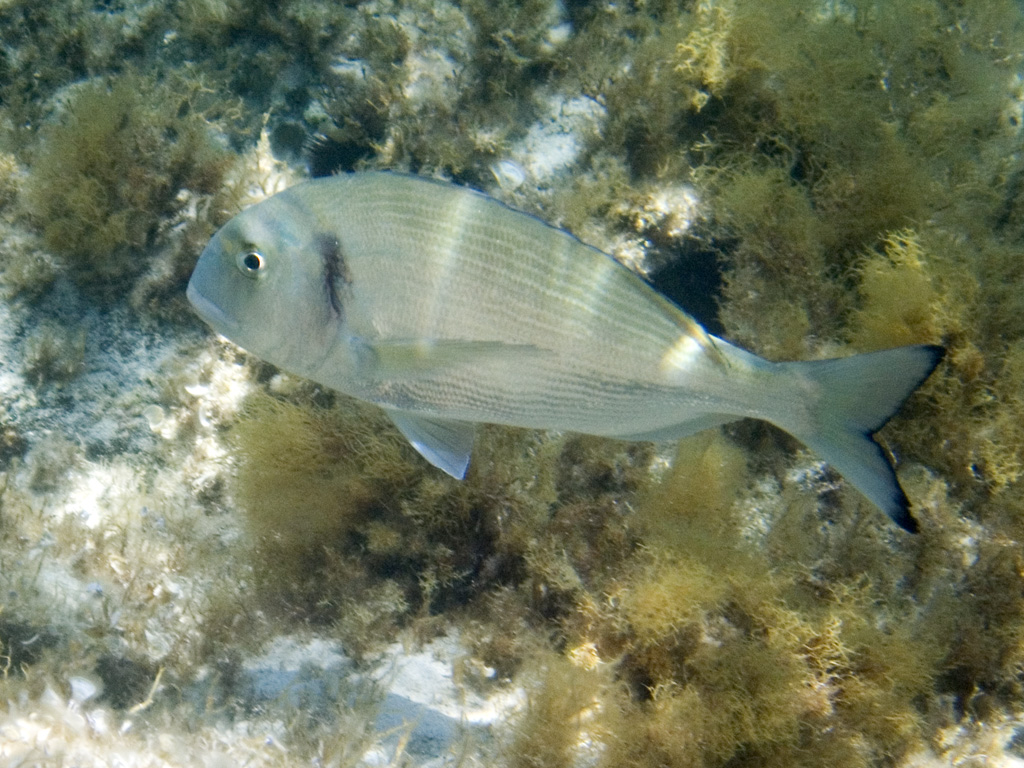|
Sparicotyle Chrysophrii
''Sparicotyle chrysophrii'' is a species of monogenean, parasitic on the gills of the marine fish. It belongs to the family Microcotylidae. Its type-host is the gilt-head seabream (''Sparus aurata The gilt-head (sea) bream (''Sparus aurata''), known as Orata in antiquity and still today in Italy and Tunisia (known as "Dorada" in Spain, "Dourada" in Portugal and "Dorade Royale" in France), is a fish of the bream family Sparidae found in t ...''). The species was described by Van Beneden & Hesse in 1863 under the name ''Microcotyle chrysophrii'' Van Beneden, P. J., & Hesse, C. E. (1863). Second Appendice au Mémoire sur les Bdellodes et les Trématodes: Mémoire présenté à l'Académie Royale de Belgique. and transferred to the genus ''Sparicotyle'' (Figure 2-4) by Mamaev in 1984. Its morphology has been described in 2010 from specimens collected off Corsica by Antonelli et al. It is ubiquitous and abundant in the aquatic environment, isolated from fish as ectoparasite on ... [...More Info...] [...Related Items...] OR: [Wikipedia] [Google] [Baidu] |
Species
In biology, a species is the basic unit of Taxonomy (biology), classification and a taxonomic rank of an organism, as well as a unit of biodiversity. A species is often defined as the largest group of organisms in which any two individuals of the appropriate sexes or mating types can reproduction, produce Fertility, fertile offspring, typically by sexual reproduction. Other ways of defining species include their karyotype, DNA sequence, morphology (biology), morphology, behaviour or ecological niche. In addition, paleontologists use the concept of the chronospecies since fossil reproduction cannot be examined. The most recent rigorous estimate for the total number of species of eukaryotes is between 8 and 8.7 million. However, only about 14% of these had been described by 2011. All species (except viruses) are given a binomial nomenclature, two-part name, a "binomial". The first part of a binomial is the genus to which the species belongs. The second part is called the specifi ... [...More Info...] [...Related Items...] OR: [Wikipedia] [Google] [Baidu] |
Monogenea
Monogeneans are a group of ectoparasitic flatworms commonly found on the skin, gills, or fins of fish. They have a direct lifecycle and do not require an intermediate host. Adults are hermaphrodites, meaning they have both male and female reproductive structures.L.A. Tubbsa et al. (2005). "Effects of temperature on fecundity in vitro, egg hatching and reproductive development of ''Benedenia seriolae'' and ''Zeuxapta seriolae'' (Monogenea) parasitic on yellowtail kingfish Seriola lalandi". ''International Journal for Parasitology''(35), 315–327. Some monogeneans are oviparous (egg-laying) and some are viviparous (live-bearing). Oviparous varieties release eggs into the water. Viviparous varieties release larvae, which immediately attach to another host. The genus ''Gyrodactylus'' is an example of a viviparous variety, while the genus ''Dactylogyrus'' is an example of an oviparous variety. Signs and symptoms Freshwater fish that become infected with this parasite become le ... [...More Info...] [...Related Items...] OR: [Wikipedia] [Google] [Baidu] |
Fish Parasites
Like humans and other animals, fish suffer from diseases and parasites. Fish defences against disease are specific and non-specific. Non-specific defences include skin and scales, as well as the mucus layer secreted by the epidermis that traps microorganisms and inhibits their growth. If pathogens breach these defences, fish can develop inflammatory responses that increase the flow of blood to infected areas and deliver white blood cells that attempt to destroy the pathogens. Specific defences are specialised responses to particular pathogens recognised by the fish's body, that is adaptative immune responses. In recent years, vaccines have become widely used in aquaculture and ornamental fish, for example vaccines for commercial food fishes like Aeromonas salmonicida, furunculosis in salmon and Lactococcosis\Streptococcosis in farmed grey mullet, Tilapia and koi herpes virus in koi. Some commercially important fish diseases are VHS, ICH, and whirling disease. Parasites ... [...More Info...] [...Related Items...] OR: [Wikipedia] [Google] [Baidu] |
Gills
A gill () is a respiratory organ that many aquatic organisms use to extract dissolved oxygen from water and to excrete carbon dioxide. The gills of some species, such as hermit crabs, have adapted to allow respiration on land provided they are kept moist. The microscopic structure of a gill presents a large surface area to the external environment. Branchia (pl. branchiae) is the zoologists' name for gills (from Ancient Greek ). With the exception of some aquatic insects, the filaments and lamellae (folds) contain blood or coelomic fluid, from which gases are exchanged through the thin walls. The blood carries oxygen to other parts of the body. Carbon dioxide passes from the blood through the thin gill tissue into the water. Gills or gill-like organs, located in different parts of the body, are found in various groups of aquatic animals, including mollusks, crustaceans, insects, fish, and amphibians. Semiterrestrial marine animals such as crabs and mudskippers have gill chambe ... [...More Info...] [...Related Items...] OR: [Wikipedia] [Google] [Baidu] |
Fish
Fish are aquatic, craniate, gill-bearing animals that lack limbs with digits. Included in this definition are the living hagfish, lampreys, and cartilaginous and bony fish as well as various extinct related groups. Approximately 95% of living fish species are ray-finned fish, belonging to the class Actinopterygii, with around 99% of those being teleosts. The earliest organisms that can be classified as fish were soft-bodied chordates that first appeared during the Cambrian period. Although they lacked a true spine, they possessed notochords which allowed them to be more agile than their invertebrate counterparts. Fish would continue to evolve through the Paleozoic era, diversifying into a wide variety of forms. Many fish of the Paleozoic developed external armor that protected them from predators. The first fish with jaws appeared in the Silurian period, after which many (such as sharks) became formidable marine predators rather than just the prey of arthrop ... [...More Info...] [...Related Items...] OR: [Wikipedia] [Google] [Baidu] |
Microcotylidae
Microcotylidae is a family of polyopisthocotylean monogeneans.WoRMS (2018). Microcotylidae Taschenberg, 1879. Accessed at: http://www.marinespecies.org/aphia.php?p=taxdetails&id=119247 on 2018-12-03 All the species in this family are parasitic on fish. Subfamilies According to the World Register of Marine Species, the family includes 7 subfamilies: * Anchoromicrocotylinae Bravo-Hollis, 1981 Bravo-Hollis, M. (1981). Helmintos de peces del Pacífico mexicano XXXVI. Sobre un género y subfamilia nuevos de la familia Microcotylidae Taschenberg, 1879. Emend. Anales del Instituto de Ciencias del Mar y Limnología, Universidad Nacional Autónoma de México, 8, 305-314 * Atriasterinae Maillard & Noisy, 1979 Maillard, C., & Noisy, D. (1979). ''Atrispinum acarne'' n g n sp.(Monogenea, Microcotylidae) parasite de ''Pagellus acarne'' (Teleostei) du golfe du Lion. Vie et Milieu, 28(29), 4. including ''Sparicotyle chrysophrii'' * Metamicrocotylinae Yamaguti, 1963 Yamaguti S. 1963. Systema He ... [...More Info...] [...Related Items...] OR: [Wikipedia] [Google] [Baidu] |
Sparus Aurata
The gilt-head (sea) bream (''Sparus aurata''), known as Orata in antiquity and still today in Italy and Tunisia (known as "Dorada" in Spain, "Dourada" in Portugal and "Dorade Royale" in France), is a fish of the bream family Sparidae found in the Mediterranean Sea and the eastern coastal regions of the North Atlantic Ocean. It commonly reaches about in length, but may reach and weigh up to about . The gilt-head bream is generally considered the best tasting of the breams. It is the single species of the genus ''Sparus'' – the Latin name for this fish – which has given the whole family of Sparidae its name. Its specific name, ''aurata'', derives from the gold bar marking between its eyes. The genome of the species was released in 2018, where the authors detected fast evolution of ovary-biased genes likely resulting from the peculiar reproduction mode of the species. Biology It is typically found at depths of , but may occur up to , seen singly or in small groups near sea ... [...More Info...] [...Related Items...] OR: [Wikipedia] [Google] [Baidu] |
Sparicotyle Chrysophrii
''Sparicotyle chrysophrii'' is a species of monogenean, parasitic on the gills of the marine fish. It belongs to the family Microcotylidae. Its type-host is the gilt-head seabream (''Sparus aurata The gilt-head (sea) bream (''Sparus aurata''), known as Orata in antiquity and still today in Italy and Tunisia (known as "Dorada" in Spain, "Dourada" in Portugal and "Dorade Royale" in France), is a fish of the bream family Sparidae found in t ...''). The species was described by Van Beneden & Hesse in 1863 under the name ''Microcotyle chrysophrii'' Van Beneden, P. J., & Hesse, C. E. (1863). Second Appendice au Mémoire sur les Bdellodes et les Trématodes: Mémoire présenté à l'Académie Royale de Belgique. and transferred to the genus ''Sparicotyle'' (Figure 2-4) by Mamaev in 1984. Its morphology has been described in 2010 from specimens collected off Corsica by Antonelli et al. It is ubiquitous and abundant in the aquatic environment, isolated from fish as ectoparasite on ... [...More Info...] [...Related Items...] OR: [Wikipedia] [Google] [Baidu] |
Pierre-Joseph Van Beneden
Pierre-Joseph van Beneden FRS FRSE FGS FZS (19 December 1809 – 8 January 1894) was a Belgian zoologist and paleontologist. Life Born in Mechelen, Belgium, he studied medicine at the State University of Leuven, and studied zoology in Paris under Georges Cuvier (1769–1832). In 1831 he became curator at the natural history museum in Leuven, and from 1836 until 1894 was a professor of zoology at the Catholic University of Leuven. In 1842 he became a member of the ''Académie des sciences de Belgique'', becoming its President in 1881. In 1875 became a foreign member of the Royal Society of London and in 1884 an Honorary Fellow of the Royal Society of Edinburgh. In 1843 he established one of the world's first marine laboratories and aquariums. He was the father of biologist Edouard van Beneden (1846–1910). Pierre-Joseph van Beneden died in Leuven, Belgium. Scientific work Van Beneden was a specialist in the field of parasitology, being known for his comprehensive studies o ... [...More Info...] [...Related Items...] OR: [Wikipedia] [Google] [Baidu] |
Corsica
Corsica ( , Upper , Southern ; it, Corsica; ; french: Corse ; lij, Còrsega; sc, Còssiga) is an island in the Mediterranean Sea and one of the 18 regions of France. It is the fourth-largest island in the Mediterranean and lies southeast of the French mainland, west of the Italian Peninsula and immediately north of the Italian island of Sardinia, which is the land mass nearest to it. A single chain of mountains makes up two-thirds of the island. , it had a population of 349,465. The island is a territorial collectivity of France. The regional capital is Ajaccio. Although the region is divided into two administrative departments, Haute-Corse and Corse-du-Sud, their respective regional and departmental territorial collectivities were merged on 1 January 2018 to form the single territorial collectivity of Corsica. As such, Corsica enjoys a greater degree of autonomy than other French regional collectivities; for example, the Corsican Assembly is permitted to exercise ... [...More Info...] [...Related Items...] OR: [Wikipedia] [Google] [Baidu] |
Anterior End Of Sparicotyle Chrysophrii
Standard anatomical terms of location are used to unambiguously describe the anatomy of animals, including humans. The terms, typically derived from Latin or Greek roots, describe something in its standard anatomical position. This position provides a definition of what is at the front ("anterior"), behind ("posterior") and so on. As part of defining and describing terms, the body is described through the use of anatomical planes and anatomical axes. The meaning of terms that are used can change depending on whether an organism is bipedal or quadrupedal. Additionally, for some animals such as invertebrates, some terms may not have any meaning at all; for example, an animal that is radially symmetrical will have no anterior surface, but can still have a description that a part is close to the middle ("proximal") or further from the middle ("distal"). International organisations have determined vocabularies that are often used as standard vocabularies for subdisciplines o ... [...More Info...] [...Related Items...] OR: [Wikipedia] [Google] [Baidu] |








